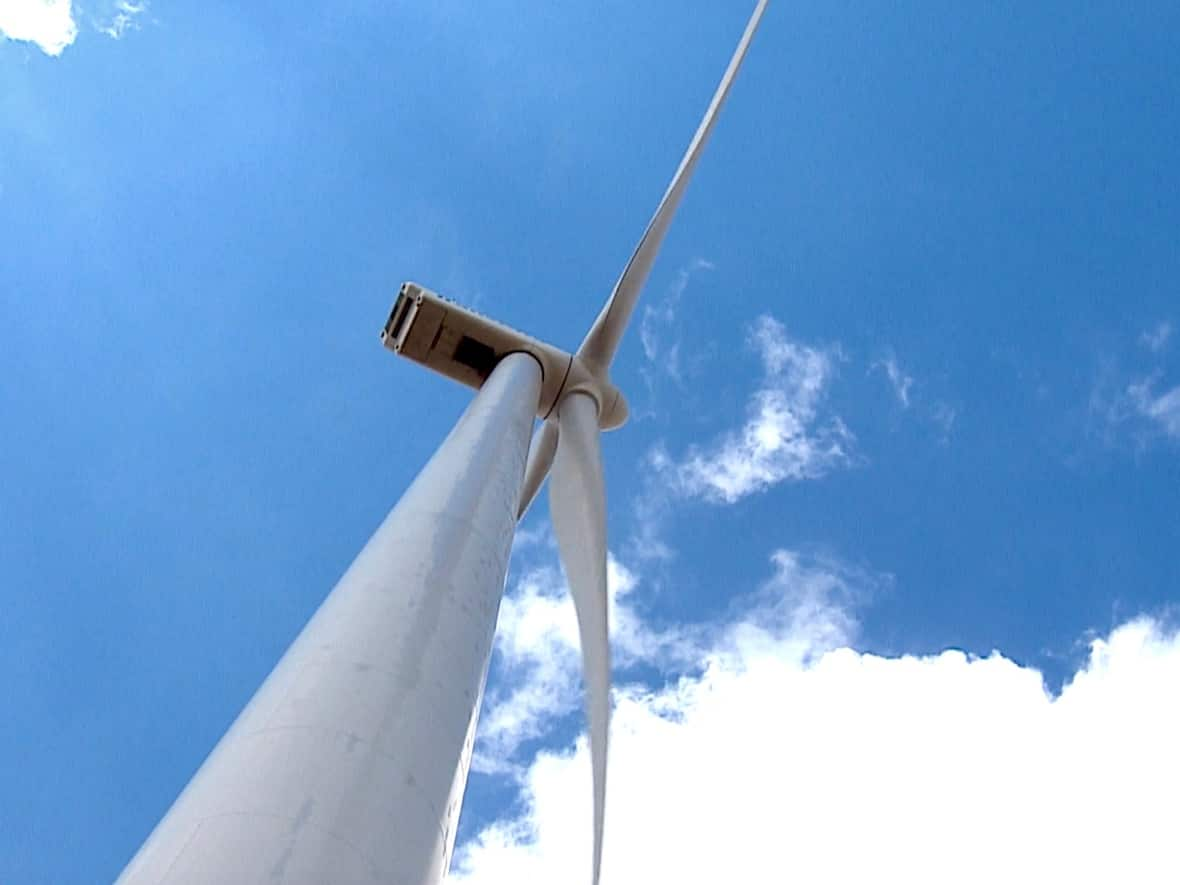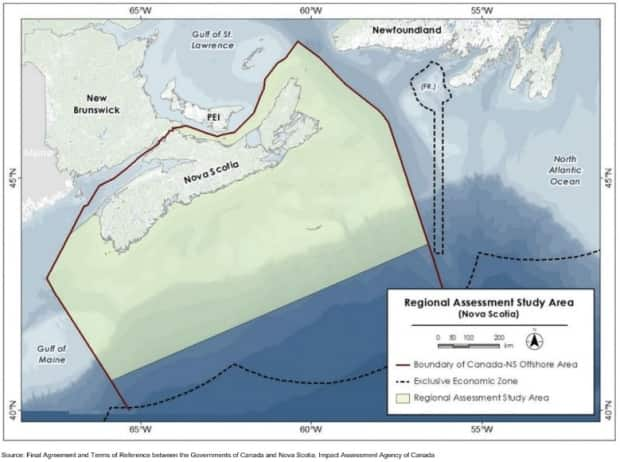Nova Scotia testing the waters on building commercial wind farms in bays

The Nova Scotia government is about to ask the wind power industry if it is interested in putting offshore wind turbines in waters under provincial jurisdiction, CBC News has learned — including Chedabucto Bay, St.Margarets Bay and Mahone Bay.
The Houston government is also planning to issue seabed leases inside provincial waters as early as 2024.
A draft Nova Scotia offshore wind road map — released to some stakeholders late last month — says the province will issue a "request for information" from developers this year followed by a call for bids in 2024 for seabed leases in waters under exclusive provincial jurisdiction.
In the road map, those waters are identified as Bras d'Or Lake in Cape Breton, St. Georges Bay in Antigonish, Chedabucto Bay, St. Margarets Bay, Mahone Bay and St. Marys Bay.
"The request for information would provide insights into areas within provincial jurisdiction that are of interest to potential offshore wind developers," Natural Resources and Renewables spokesperson Adele Poirier said in a statement to CBC News. "So far, no specific areas have been designated by the province."
The solicitation raises the incongruous prospect of wind turbines close to an international landmark like the Peggys Cove lighthouse in St. Margarets Bay, or within sight of the Town of Lunenburg, a UNESCO world heritage site.

The offshore wind road map spells out the opportunities as viewed by the provincial government.
"In waters under provincial jurisdiction, early commercial-scale offshore wind could be developed closer to shore at relatively competitive costs, establishing a foundation for future larger-scale developments in joint-managed waters," the road map obtained by CBC News stated.
The document from the Nova Scotia Department of Natural Resources and Renewables says wind towers in nearshore waters could be used to test offshore wind technology and help meet a legislated requirement that 80 per cent of the province's electricity be generated from renewable sources by 2030.
The department says it intends to release the road map publicly soon.
The province has previously identified Chedabucto Bay, at the mouth of the Strait of Canso, as a place where it is interested in seeing offshore wind power development.
In a briefing to the fishing industry in April, the department confirmed its intentions.

"The province is interested in the Chedabucto Bay area for offshore wind development and is interested in meeting with fishing and community representatives to discuss it," the department said in a written response to questions from members of the fishing industry that were also obtained by CBC News.
Fishing representatives from Guysborough and Richmond counties met with local MLAs Greg Morrow, Trevor Boudreau and Fisheries and Nova Scotia Aquaculture Minister Steve Craig on Friday to talk about their concerns.
"We absolutely do not know what the footprint is and the province doesn't know itself as the regulator, because that part of the project has not been identified," says Ginny Boudreau, a longtime manager with the Guysborough County Inshore Fishermen's Association.
The area is home to lucrative inshore lobster, scallop and shrimp trap fisheries.
"We need to have some regulation and some policy around that to protect the marine environment and also the existing industries that are 100 per cent dependent on the marine environment. That's the conversation we'd like to have, and we haven't had that yet. We're just starting," Boudreau told CBC News.
For projects that are proposed in provincial waters and regulated under the provincial act, a provincial environmental impact assessment would be triggered if they would produce two megawatts or more, which would cover one turbine.

Chedabucto Bay isn't a surprising choice, since the province has already granted environmental approvals for two proposed green hydrogen plants — known as Ever Wind and Bear Head — in the Strait area.
Both projects have also been awarded large tracts of Crown land for onshore wind farms, to supply electricity that will be converted into hydrogen and then ammonia to be exported and then converted back to electricity.
Wind turbines in waters under provincial jurisdiction are a very small part of a more ambitious plan outlined by the Houston government to offer seabed leases for five gigawatts of offshore wind energy by 2030 to support a green hydrogen industry.
Five gigawatts is double the peak winter demand for electricity in Nova Scotia.
Offshore wind development will be jointly managed by the federal and provincial governments, which are busy creating a regime to oversee the arrival of offshore wind turbines.
"The potential for offshore wind development presents Nova Scotians and its Mi'kmaq and Indigenous peoples from other communities with a generational opportunity for inclusive economic growth, building on existing skills and supply chain," the offshore wind road map states.
Fast-track development?
A five-person committee has been formed to oversee a federal-provincial assessment of offshore wind in the region. It will gather data, identify gaps and consult with Indigenous groups, federal and provincial authorities, non-government organizations and the public throughout the regional assessment.
The committee has been asked to identify future planning and licensing areas for offshore wind, as well as to recommend approaches to monitoring and mitigating potential impacts.
It is expected to complete that work by September 2024.
In its written response to the fishing industry, the department said offshore wind projects take about eight to 10 years to develop once a seabed licence is awarded, "so the province is not anticipating operational wind farms in the water for some time."
In the meantime, bays are being considered as a way to fast track development.
"This timeframe precedes development in joint managed waters and could allow offshore wind to play an earlier role in helping meet domestic decarbonization targets," the road map says.
The province is looking at using provisions in its Marine Renewable-Energy Act to designate an "Area of Marine Renewable Energy Priority" for offshore wind in Nova Scotia's nearshore.
"The Province of Nova Scotia is also exploring how a commercial offshore wind project in Nova Scotia's nearshore could work to support research and innovation and to showcase the deployment of offshore wind technologies and the end-use application of offshore wind energy," the road map says.
A draft of the Nova Scotia Offshore Wind Roadmap
MORE TOP STORIES

